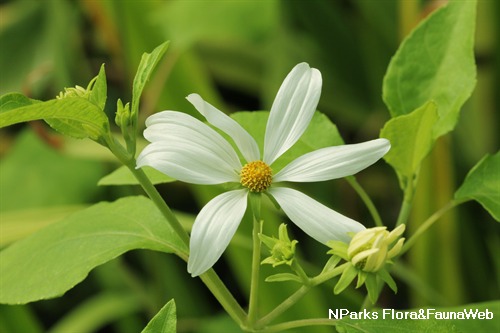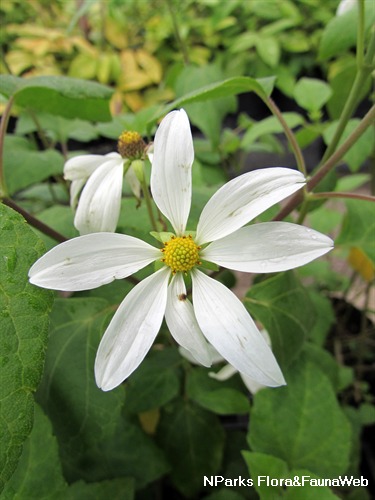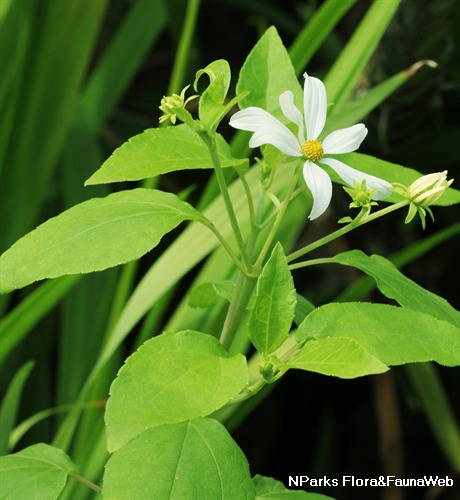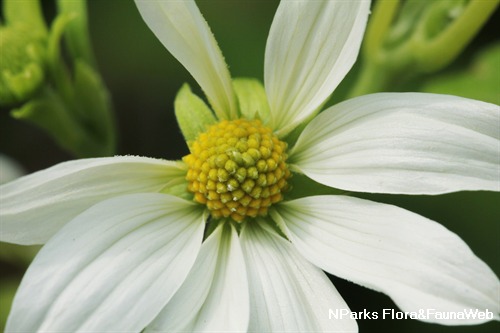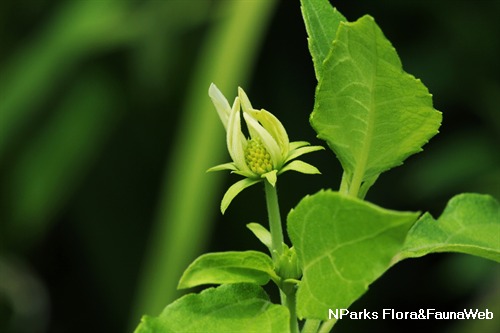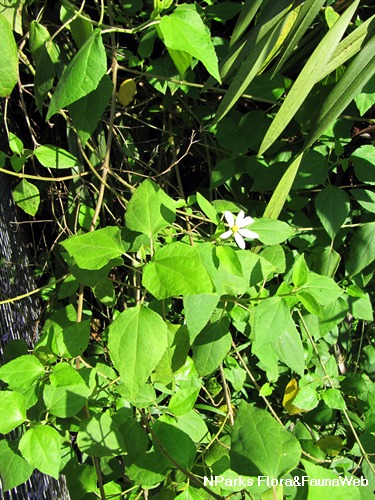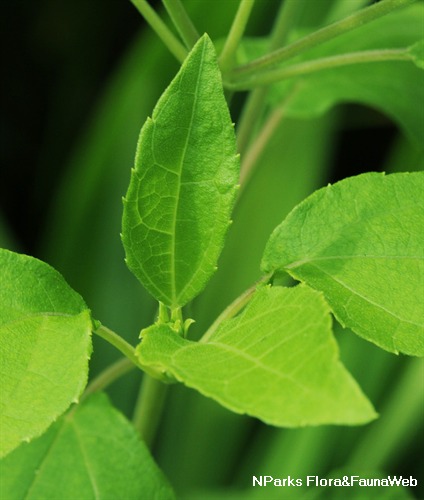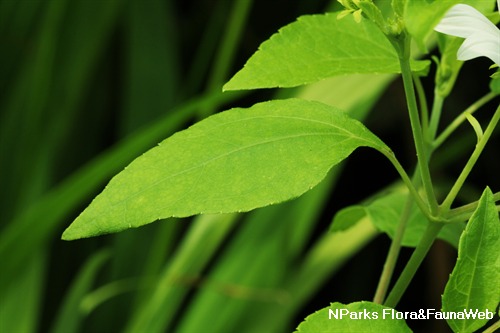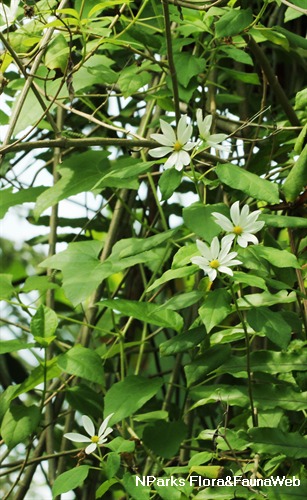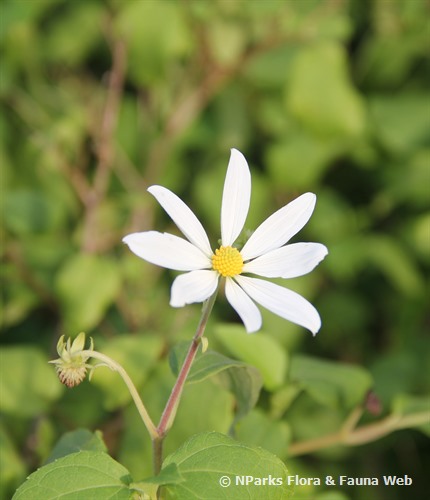
Back
Montanoa atriplicifolia (Pers.) Sch. Bip.
| Family Name: | Asteraceae (Compositae) |
| Synonyms: | Montanoa dumicola Klatt, Montanoa pauciflora Klatt, Montanoa schottii B.L. Rob. & Greenm. |
| Common Name: | Yucatan Daisy, Tree Daisy |
Name
Classifications and Characteristics
| Plant Division | Angiosperms (Flowering Seed Plants) (Dicotyledon) |
|---|---|
| Plant Growth Form | Climber, Shrub |
| Mode of Nutrition | Autotrophic |
Biogeography
| Native Distribution | Mexico |
|---|---|
| Native Habitat | Terrestrial |
Description and Ethnobotany
| Growth Form | A shrub or vine growing to about 3 m tall and 15 m long. |
|---|---|
| Foliage | The leaves are arranged in opposite pairs along the stem and are ovate to pentagonal in shape with an acute to acuminate apex. The leaves are pubescent with an entire to irregularly serrate margin. |
| Stems | Stems can grow between 3 to 5 m long. Stems are light brown, the herbaceous parts puberulent. |
| Flowers | The flowers are borne in inflorescences. The ray florets are white, apex can be acute or two-notched; and the disc florets are yellow with acuminate apex. |
| Fruit | Achene, smooth surface, brown to black in colour, measuring about 2.5 mm long and 1.5 mm wide. Each fruit is surrounded by green and papery receptacle bracts, flattened against one another. |
| Habitat | Found in wide range of habitats from cool forests to dry roadsides, more vine-like at lower altitudes in drier environments. |
| Cultivation | The plant does best under full sun on moist, well-drained soil. It needs to be pruned to promote a bushy growth shape |
| Etymology | The specific epithet atriplicifolia means with leaves like Atriplex which is the saltbush plant. |
Landscaping Features
| Desirable Plant Features | Ornamental Flowers |
|---|---|
| Landscape Uses | Parks & Gardens, Trellis / Arbour / Pergola |
Fauna, Pollination and Dispersal
| Pollination Method(s) | Biotic (Fauna) |
|---|
Plant Care and Propagation
| Light Preference | Full Sun |
|---|---|
| Water Preference | Moderate Water |
| Rootzone Tolerance | Moist Soils, Well-Drained Soils |
| Propagation Method | Seed |
Foliar
| Foliage Retention | Evergreen |
|---|---|
| Mature Foliage Colour(s) | Green |
| Mature Foliage Texture(s) | Velvety / Furry / Tomentose |
| Prominent Young Flush Colour(s) | Green |
| Young Flush Texture(s) | Velvety / Furry / Tomentose |
| Foliar Type | Simple / Unifoliate |
| Foliar Arrangement Along Stem | Opposite |
| Foliar Attachment to Stem | Petiolate |
| Foliar Shape(s) | Non-Palm Foliage (Ovate) |
| Foliar Venation | Pinnate / Net |
| Foliar Margin | Serrate / Toothed |
| Foliar Apex - Tip | Acute, Acuminate |
| Foliar Base | Rounded / Obtuse |
Floral (Angiosperm)
| Flower & Plant Sexuality | Bisexual Flowers |
| Flower Colour(s) | White, Yellow / Golden |
|---|---|
| Flower Texture(s) | Smooth |
| Flower Grouping | Cluster / Inflorescence |
| Flower Location | Axillary |
| Flower Symmetry | Radial |
| Inflorescence Type | Compound Head / Capitulum |
| Flowering Period | Free-Flowering |
Fruit, Seed and Spore
| Mature Fruit Colour(s) | Black, Brown |
|---|---|
| Mature Fruit Texture(s) | Smooth |
| Fruit Type | Indehiscent Dry Fruit |
Image Repository
Others
| Master ID | 32227 |
|---|---|
| Species ID | 6635 |
| Flora Disclaimer | The information in this website has been compiled from reliable sources, such as reference works on medicinal plants. It is not a substitute for medical advice or treatment and NParks does not purport to provide any medical advice. Readers should always consult his/her physician before using or consuming a plant for medicinal purposes. |

